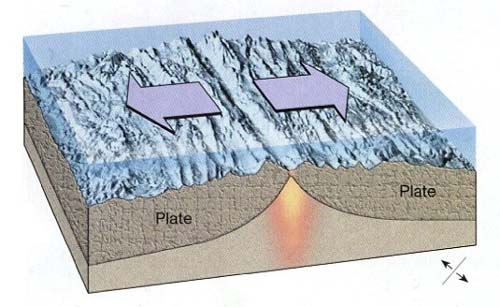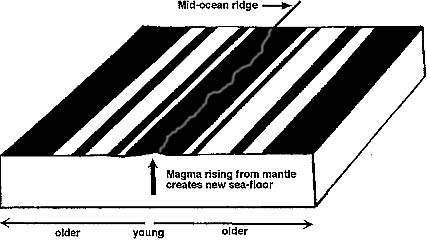Plate Tectonics and the Scientific Method
|
It was not until new methods of testing continental drift (and sea floor spreading) were introduced that plate tectonics theory gained acceptance. |
 |
|
For example, it was predicted that the age of rocks increased away from mid-ocean ridges. Dating methods for rocks proved this prediction true. |
 |
|
Plate tectonics has been rigorously tested from numerous subdisciplines in geology. Most geologists accept these tests as verification of plate tectonics. Successful testing and widespread acceptance elevates plate tectonics from a hypothesis to a theory. |
 |
 |
|
|
The presence of earthquakes and volcanoes supports the theory of Plate tectonics, in fact the distribution of earthquakes and volcanoes marks the boundaries of the different plates. |
|
| Other patterns such as the distribution of earthquakes, mountain belts, and volcanoes, the shape of the sea floor, and the distribution of rocks and fossils can attest and verify the theory of plate tectonics. |
 |
 |
 |
 |
Brooklyn College - Geology Department